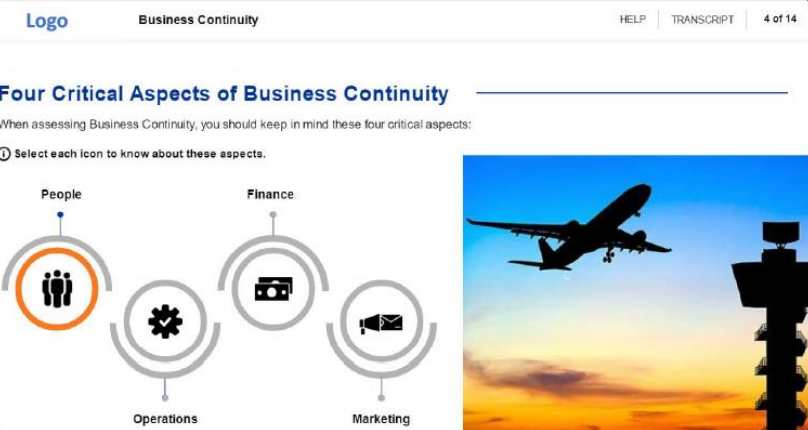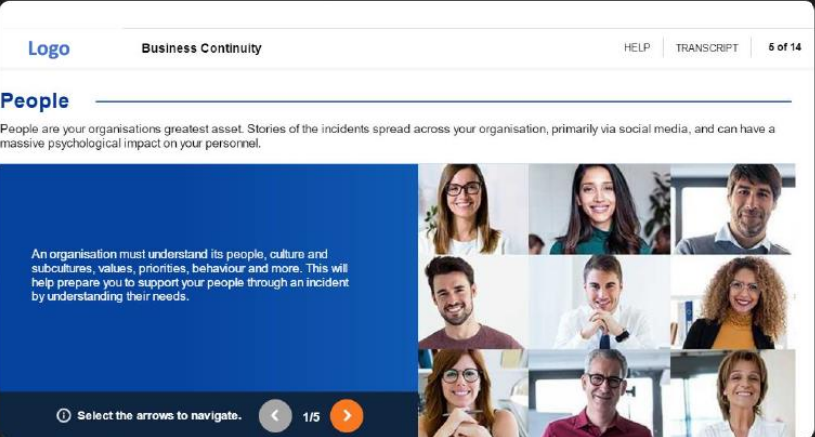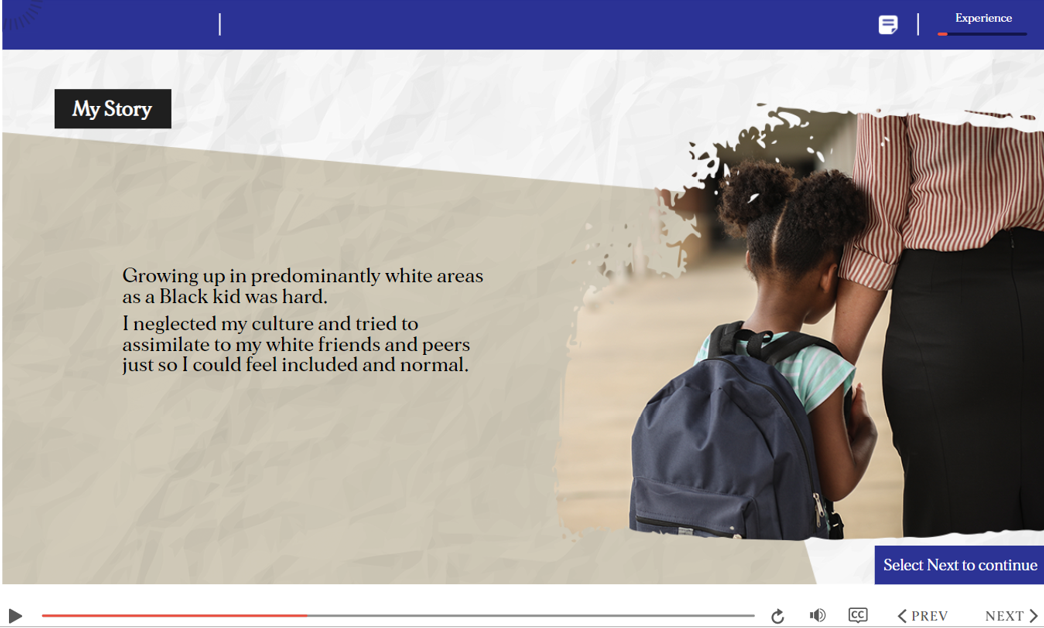
Self-paced Learning is a natural alternative to traditional training, to meet the demand for customized and flexible solutions. Here are 6 strategies to boost Self-paced Learning and make it more engaging and effective.
What Is Self-paced Learning?
Self-paced Learning is a method of instruction where learners move through course content at their own pace, with an instructor to guide them better. In other words, it is quite different to classroom-based or cohort-based learning where you have a fixed schedule and learn at the pace dictated by your instructors; learners entirely drive this. Important expectations are flexibility, autonomy and personalization so the learners can engage with content to as much or less extent required.
At its core, Self-paced Learning embodies learner control over the pace of their learning. So it allows every individual to give a lot or a little time for certain topics as per their own understanding and interest. This level of control can help address different learning speeds and styles, tailoring the pacing to ensure learners have time for difficult concepts while also allowing them to move quickly through material they understand well — thus helping create a more personalized learning experience.
Self-Paced Learning vs. Instructor-Led Training
Self-paced Learning and Instructor-Led Training (ILT) are two different modes of education/learning. In Self-paced Learning, the material is handed to the learner and they are left alone with it without real-time interaction from any instructor or other learners. Flexible learning schedule – learners can proceed at their own pace ILT, on the other hand, refers to classroom-based or instructor-led training where all learners move along a fixed schedule and participate in synchronous discussions/activities.
Self-Paced Learning
Advantages of Self-paced Learning:
- Flexibility: They can learn at a time that works for them, blending learning with their personal and professional lives.
- Personalization: Empowers learners to learn at their own pace and customize an experience geared toward individual needs.
- Cost-efficient: Overall, it reduces the training costs by catering to a broader audience and reducing the demand for several instructor-led sessions.
Drawbacks of Self-paced Learning:
- Lack of Immediate Feedback: How much feedback do you really get in real-time from an instructor?
- Reduced Collaborations: Fewer opportunities to interact with peers and collaborate, which is likely less away from networking and group studies.
- Motivation challenges: Lacking fixed deadlines or social pressure often lowers motivation and discipline.
Instructor-Led Training
Advantages of Instructor-led Training:
- Structured Learning: Offers a defined schedule and explicit instruction, resulting in an organized learning environment.
- Immediate Feedback: Offers immediate feedback and advice from the instructor.
- Improved Collaboration: Peer work, networking opportunities enhance the learning process.
Drawbacks of Instructor-led Training:
- Less Flexibility: Fixed schedule, so may not work with all personal/professional commitments.
- Pace Limitation: The instructor sets the pace at which this course is to be followed through.
- Higher Cost: There are higher costs associated with running programs as you have to pay for scheduling, staff, and smaller group sizes.
What Are the Key Benefits of Self-paced Learning?
- Flexibility: Learn when/where you want (especially from home!).
- Scalability: Supports the learning needs of a small as well as an expanding, diverse workforce.
- Adaptability: Is available on multiple learning devices, platforms, and operating environments.
- Customization: Is easily configurable for different roles/responsibilities.
- Personalization: Delivers unique training for each learner as opposed to a one-size-fits-all approach.
- Multi-generational workforce support: Boomers, Gen-X’ers/Y’ers, and Millennials can each create unique learning paths to support their individual learning styles.
- Increased Engagement and Motivation: Can take control of their development, leading to higher levels of motivation and commitment to learning.
- Better Knowledge Retention: Effective absorption and retention of information, leading to deeper understanding and long-term retention.
- Just-in-Time Training and Productivity Boost: Can access training materials when they need, applying new skills immediately to their work, which boosts productivity.
Disadvantages of Self-paced Learning in the Workplace
- Lack of Real-Time Feedback: Without immediate feedback from instructors, employees may struggle to correct misunderstandings or gain insights during the learning process.
- Issues with Procrastination: The lack of a fixed schedule can lead to procrastination, causing delays in completing training and hindering progress.
- Choice Paralysis: With too many options available, employees might feel overwhelmed by the choices, leading to indecision and inactivity.
- Difficulty Assessing Progress: Without regular checkpoints, it can be challenging for both employees and employers to gauge learning progress and ensure that objectives are being met.
- Lack of Collaboration: Self-paced Learning often occurs in isolation, which may limit opportunities for peer learning and collaboration, potentially reducing the effectiveness of the training.
Self-paced Learning Design Tips
Here are some best practices to follow when building efficient Self-paced Learning initiatives:
- Integrate Microlearning: Classify content in small nuggets as micro-units like short videos, quizzes and infographics. This increases engagement and retention as it provides information in bite sized pieces.
- Keep Monitoring Progress: To ensure that learners who may be at risk of falling behind get the needed assistance, progress monitoring should continue. Leverage tools for nudging and support to keep it easy for students to stick with the flow.
- Timely Feedback: In a self-paced environment providing immediate feedback on assessments from automated processes will also help to nudge learners along. The goal of this is to ensure they know what progress can be increased, as well as areas that need to improve.
- Implement Gamification: Merge game-like elements, such as leaderboards, badges and interactive simulations makes learning interesting and learning continuous.
- Support Repetition : Offer key information in multiple ways and add repetition at intervals to ensure understanding. This will make the material stick for better recall.
- Provide Resources to Support Learners: Make supplementary materials and self-help channels (discussion forums) to support learners who need extra help.
What Strategies Can You Adopt to Deliver Self-paced Learning?
To create effective and immersive Self-paced Learning experiences, consider leveraging a Learning and Performance Ecosystem-based approach for your workforce. This mode works on the principle of continuous learning (rather than discrete learning) and provides value-adds to the learners over distance.
Capturing Attention for Training Opportunities
- Newsletters and Teaser Videos: Use engaging newsletters and teaser videos to promote the significance of upcoming Self-paced Learning initiatives.
- Creating Buzz: Develop a campaign to generate excitement and curiosity about the training program, emphasizing its relevance to the employees’ roles.
Building Awareness Around “What’s In It For Me” (WIIFM)
- Highlighting Value: Clearly communicate the personal and professional benefits of the training to motivate participation.
- Targeted Messaging: Tailor messages to different employee segments, focusing on how the training will address their specific needs and career goals.
Implementing Immersive Learning Strategies for Formal Training
- Gamification: Add game like elements powered by AI to make learning more fun and competitive. AI can adjust difficulty levels, rewards, and challenges based on individual learner performance, to keep it fresh and motivating.
- Augmented Reality (AR) and Virtual Reality (VR): Utilize AR/VR technologies, powered by AI, to create immersive learning experiences that simulate real-world scenarios. AI can personalize these simulations in real-time, adapting scenarios to individual learner needs and providing instant feedback.
- Scenario-Based Learning: Develop scenarios that mimic workplace challenges, integrating AI to provide adaptive challenges and personalized guidance. AI-driven role-play simulations can offer realistic interactions and feedback, allowing learners to practice problem-solving in a safe environment.
- Interactive Story-Based Learning: Leverage AI to enhance storytelling techniques, making learning more relatable and memorable. AI can customize narratives and interactive elements to individual learning styles and needs, guiding learners through complex concepts with personalized feedback.
- Branching Scenarios: Offer learners multiple paths and outcomes based on their decisions, with AI-driven analysis to provide tailored feedback and insights. This approach enhances critical thinking by adapting scenarios to the learner’s choices and performance.
- Complex Decision-Making Simulations: Create simulations that require learners to make challenging decisions, using AI to adjust scenarios and provide immediate, personalized feedback. AI can simulate real-life complexities and adapt the difficulty level to match the learner’s evolving skills.
Enabling Learning in the Flow of Work with Performance Support Tools (PSTs)
- Job Aids: Provide practical tools and resources that employees can use at the moment of need to reinforce learning and assist in task completion.
- On-the-Job Application: Ensure that PSTs are easily accessible and integrated into daily workflows to support ongoing learning.
Post-Training Reinforcement
- Minimizing Knowledge Erosion: Implement strategies to reinforce learning and combat the forgetting curve, such as regular follow-up quizzes or refresher courses.
- Advanced Learning Content: Challenge employees with more complex material as they progress, ensuring continuous learning and skill development.
- Practice Zones: Establish dedicated spaces (physical or virtual) where learners can practice and refine their skills without pressure.
- Reconnects: Use related curated content and cues to keep the learning journey alive, encouraging ongoing engagement with the material.
Offering Social or Collaborative Learning Opportunities
- Peer Networking: Facilitate social learning through peer networking opportunities, allowing employees to share knowledge and insights.
- Group Forums: Create forums, both within and outside the workplace, where employees can collaborate, discuss, and learn from each other.
- Community Building: Foster a sense of community among learners, encouraging them to support and motivate each other in their learning journeys.
Examples of Self-paced Learning
Case Study 1:
Background: A global disaster responses services provider wanted to help its employees and clients plan, train, exercise, and, if necessary, respond to an incident through a seamless learning program. The aim was to digitize their classroom training program to an engaging learning experience. The challenge was to convert dry and sensitive content into an interactive training session and impart it across international clients in the most innovative way.
Solution: Our primary goal was to design a digitized training that allowed the learners to consume the information at their own pace while remembering the principles of aviation crisis management. We associated with the subject matter experts to craft the relevant principles into small learning nuggets that were stringed into a learning path with Performance Support Tools (PSTs).
Impact: The digitization of the training program led to the following:
- A positive reaction from learners for the first-time digital learning experience.
- Improved demonstration of values and behaviors than the erstwhile face-to-face training program due to learning being relatable.
- A better understanding of the processes and implementation in actual situations with Self-paced Learning.
- The goal to establish the importance of compliance to the process was achieved.
Case Study 2:
Background: An Indian fashion retail giant set out to digitize their training programs to cater to their growing number of employees. The induction training topped the list; the objective was to orient employees about the history, vision, mission, and values of the organization in the most innovative way. The pilot program was to be run through one business unit to gauge success before replicating it across the organization.
Solution: Our core strategy involved a hands-on collaboration with the Business Unit to craft an engaging learning experience for a ‘first-time digital audience.’ By designing thematic visuals mapped to real-life scenarios familiar to learners, we aimed to make the content engaging and accessible. Microlearning was adopted to deliver crisp, succinct content, allowing learners to absorb information at their own pace (Self-paced Learning) and within their preferred learning style. The learning units were seamlessly integrated into the thematic designs, providing a truly innovative and flexible learning journey.
Impact:
- The program had higher registrations and completions than estimated.
- The overall success led to rollouts within multiple business units within a year’s time.
Case Study 3:
Background: A growing DEI consulting agency sought an eLearning partner as it embarked on a digital transformation of its in-person and virtual training offerings. Due to increasing demand for foundational DEI trainings, there was a growing need to find effective ways to deliver this content. Additionally, the organization has had several clients who wanted to scale this training to more employees (1000+) who may also be geographically distributed across the United States. Until this point, training was limited to 30 participants per session. To begin with, they wanted to digitize its signature training on Anti-Racism.
Solution: Considering the nature of the topic, we broke down the content into 7 digestible modules to offer learners a break as they progress on their learning journey. Each module leveraged immersive storytelling along with personalization based on their affinity groups to allow learners to effectively ‘apply’ the core concepts. The journey was kept open-ended by having reflection activities to help learners contextualize the information they are being exposed to and their responses were compiled in a downloadable PDF for their future reference. Last but not least, the courses complied with WCAG AA standards to remove any barriers to learning. This complete learning journey was hosted on a customized LXP that also facilitated social and peer-to-peer learning through built-in forums.
Impact: The organization is currently piloting the course with existing partner organizations with staff located throughout the United States. The course was described as highly relational and interactive. Here are a few testimonials that highlight how the impact reflects the objectives of the learning design, i.e., Self-paced Learning.
- “There are so many positive elements of this course:
- Mentors that act as a guide that you also get to know.
- Accessibility: Audio options and cc captioning
- The review in the beginning on how to navigate the course.
- Use of anchors (things like buttons being the same shape, color and place)”
- Director of Digital Learning
- “Great platform – takes us on an organized, clear path
- It was helpful to have reflection time along the way
- Love there is a place to take notes
- Appreciated the interactive timelines and historical examples of institutional and cultural racism”
- Employees National Non-profit Organization
The unique capabilities of a Self-paced Learning experience help seamlessly connect learners with a broad array of learning content, best practice processes, and supporting tools. They provide a richer and holistic approach to delivering training programs, which helps enhance workforce performance.
I hope this article provides the required insights to maximize your training efficiency with the Self-paced Learning strategies.









